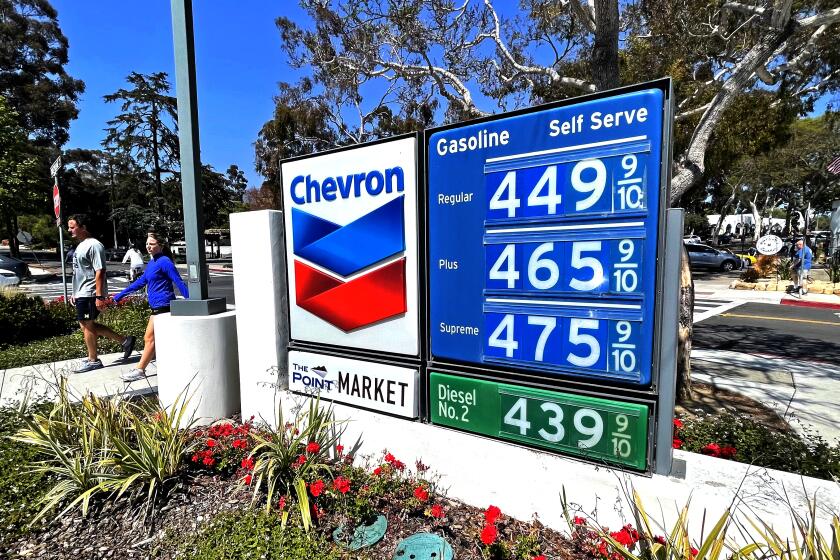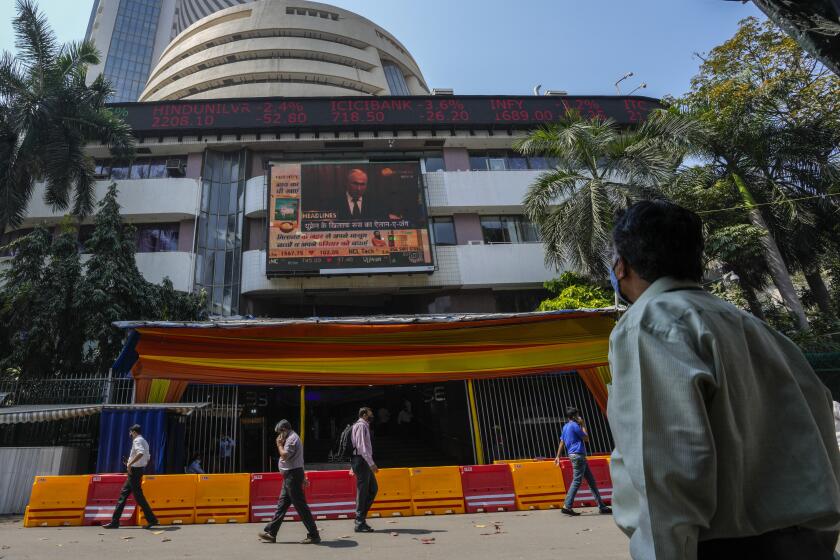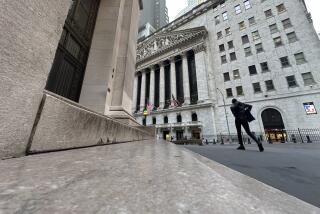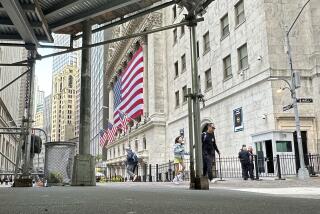U.S. markets recover after Ukraine invasion sends them reeling
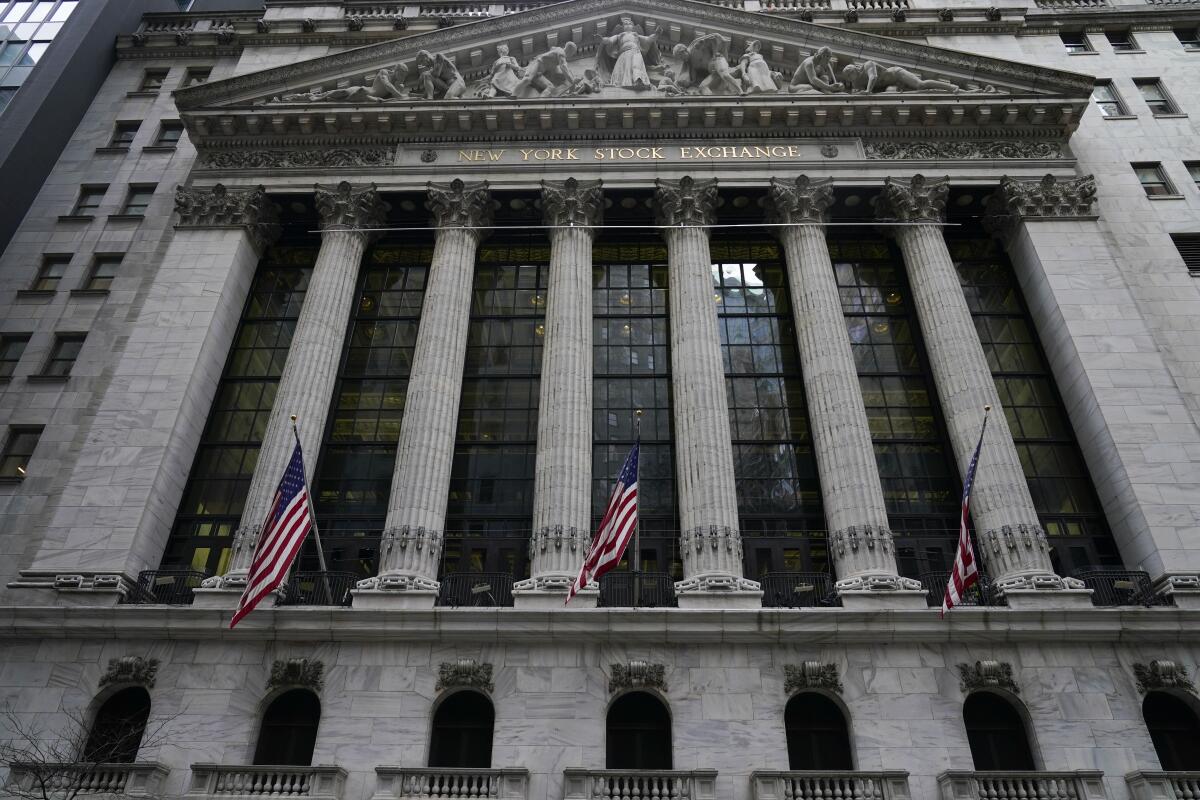
- Share via
NEW YORK — Markets swung wildly Thursday as the world reacted to Russia’s invasion of Ukraine. Stocks in Europe fell sharply, while stocks in the U.S. recovered from early losses after President Biden stopped short of implementing the steepest possible sanctions against Russia.
The Standard & Poor’s 500 index rallied 1.5% after erasing an early 2.6% loss, while the Nasdaq composite staged an even bigger comeback to end with a gain of more than 3%. The heaviest losses hit stocks in Europe, where officials called Russia’s actions a “brutal act of war,” with the German DAX down 4%.
Oil prices had surged early but ended with moderate gains.
Will gas and food prices continue to rise? How might the conflict in Eastern Europe affect Silicon Valley and Hollywood?
Beyond its human toll, the conflict looks set to send prices spiraling even higher at gasoline pumps and grocery stores around the world as prices for oil, wheat and corn soared. Russia and Ukraine are major producers not only of energy products but also grains and various other commodities.
Oil prices on both sides of the Atlantic jumped toward or above $100 per barrel to their highest levels since 2014, up more than 6%. But they gave back much of their gains after Biden said the sanctions package is “specifically designed to allow energy payments to continue.” Biden also said he wanted to limit the economic pain for Americans.
Although Biden described the sanctions as severe, Ukrainian officials urged the U.S. and the West to go further and cut the Russians from a crucial financial payments system called SWIFT.
Afterward, the price of U.S. oil settled at $92.81, up 71 cents for the day, but well below the $100.54 it had touched earlier in the session.
Wholesale prices rose for a variety of commodities, including heating oil, wheat and gasoline. As with stocks, the movements were sharper in Europe than in the U.S. because its economy is more closely tied to Russia and Ukraine. The spot price in Europe for natural gas jumped more than 50%.
Increases in energy and food prices could amplify worries about inflation, which in January hit its highest level in the United States in a couple of generations, and what the Federal Reserve will do to rein it in. The Fed looks certain to raise the super-low interest rates that investors love, which also helped catapult financial markets and the economy out of their coronavirus-driven plunge. The only question has been how quickly and how aggressively the Fed will move.
In the past, for example, the Fed has sometimes delayed big policy decisions amid uncertainty about the Kosovo war and the U.S. invasion of Iraq, according to Goldman Sachs. But economists at the bank say they still expect the Fed to raise rates steadily at its upcoming meetings.
The Ukraine tensions probably just make it less likely that the Fed will start the process with a bigger-than-usual increase in rates, something some Fed officials recently suggested.
“The Fed may become more worried about the impact on economic growth and will probably want to tread more cautiously,” said Kristina Hooper, chief global market strategist at Invesco.
Gasoline prices depend on global supply and demand, which has been out of whack since the pandemic started. California drivers pay a premium for special blends.
Many investors said that past global events, such as an invasion, have had only short-term effects on markets that lasted a few weeks or months.
With expectations falling for a bigger-than-usual increase in interest rates next month, stocks that tend to benefit the most from low rates led the way for indexes to pare their losses through the day. That put the spotlight on Big Tech stocks, and Amazon, Microsoft and Nvidia all rose 4.5% or more.
That helped the Nasdaq composite swing from a 3.4% loss in the morning to a 3.3% gain by the end of the day, rising 436.10 points to 13,473.58. It was a remarkable turnaround after Nasdaq was on track during the morning to close 20% below its record high for the first time since the COVID-19 pandemic collapsed the economy in 2020. Expectations for higher interest rates had been beating down high-growth and tech stocks for weeks.
The Dow Jones industrial average, which isn’t as influenced by tech stocks, rose a more modest 92.07 points, or 0.3%, to 33,223.83. It rallied back from an earlier 859-point loss. The S&P 500 rose 63.20 points to 4,288.70.
Huge swings also rocked the bond market, where yields initially sank as money moved into investments that looked to offer safer returns than stocks. But yields recovered through the day, and the 10-year Treasury yield was at 1.96% in late trading, close to the 1.97% it was at late Wednesday.
.
Just what a vulnerable world economy didn’t need: A conflict that accelerates inflation, rattles markets and portends trouble for consumers globally.
The FTSE 100 in London fell 3.9% after Europe awakened to news of explosions in the Ukrainian capital of Kyiv, the major city of Kharkiv and other areas.
Moscow’s stock exchange briefly suspended trading on all its markets Thursday morning. After trading resumed, Russian indexes plunged by a third or more.
“How bad could this get? Well, how long is a piece of string, right?” said Jonas Goltermann, senior global markets economist at Capital Economics. “There aren’t that many obvious examples of this type of shock to markets.”
Associated Press writer Joe McDonald contributed to this report.
More to Read
Inside the business of entertainment
The Wide Shot brings you news, analysis and insights on everything from streaming wars to production — and what it all means for the future.
You may occasionally receive promotional content from the Los Angeles Times.
